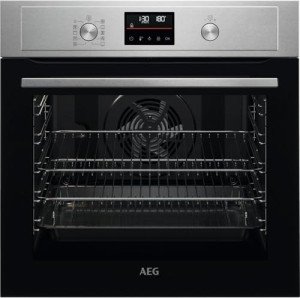The Benefits of Self-Cleaning Ovens: A Comprehensive Guide
In the modern cooking area, convenience and efficiency are critical. One device that has acquired enormous popularity due to its ease of use is the self-cleaning oven. With its automatic cleaning cycle, this innovative technology not just saves time but also simplifies the process of preserving a clean cooking area. This post explores the numerous benefits of self-cleaning ovens, their various cleaning approaches, and responses to regularly asked concerns.
Comprehending Self-Cleaning Ovens
Self-cleaning ovens are developed to streamline the often tiresome job of cleaning. They typically utilize one of 2 main techniques: high heat (pyrolytic cleaning) or steam cleaning. Each method has its specific advantages, guaranteeing that the appliances work efficiently.
Cleaning Methods Explained
Pyrolytic Cleaning:
- During the pyrolytic cleaning process, the oven warms up to extremely high temperatures, often going beyond 850 ° F(450 ° C). Food residues are incinerated and transformed into ash, which can be quickly cleaned away.
Steam Cleaning:
- Steam cleaning ovens rely on water to create steam that loosens food particles.
- This method normally runs at a lower temperature and needs a little bit of manual cleaning after the cycle finishes.
| Cleaning Method | Temperature Range | Cleaning Duration | Cleaning Residues | Handbook Work Required |
|---|---|---|---|---|
| Pyrolytic | As much as 900 ° F( | 482 ° C) 2 to 4 hours Ash | Very little | |
| Steam Cleaning | 250 ° F to 350 ° F( | 120 ° C to 175 ° C) 30 to 90 minutes Damp residues | Moderate |
Benefits of Self-Cleaning Ovens
Self-cleaning ovens come with a selection of benefits that make them a beneficial financial investment for any home cook. Below are the main benefits:
1. Time-Saving Convenience
- Automatic Cleaning Cycles: Once the oven is set, users can leave it unattended throughout the cleaning cycle, maximizing important time.
- Less Frequent Cleaning: The self-cleaning function permits for less regular handbook scrubbing, making it more workable for busy families.
2. Boosted Hygiene
- Efficient Sanitization: High temperature levels during pyrolytic cleaning efficiently kill bacteria and bacteria, leading to a cleaner, more hygienic cooking environment.
- Prevention of Cross-Contamination: Regular self-cleaning minimizes the threat of food residues causing cross-contamination.
3. Improved Cooking Performance
- Consistent Heat Distribution: A tidy oven cooks food more equally, as dirty surfaces can soak up heat in a different way, resulting in uneven cooking.
- No Unpleasant Odors: By burning food residues, self-cleaning gets rid of sticking around smells from past meals.
4. Ecological Considerations
- Minimized Chemical Use: Many self-cleaning ovens do not require severe chemical cleaners, promoting a green technique to oven maintenance.
- Energy Efficient Options: Some models are developed with energy conservation in mind, utilizing very little power during cleaning cycles.
5. Increased Home Value
- Appealing Kitchen Features: A self-cleaning oven can be an appealing feature for potential home purchasers, enhancing the total worth of the property.
6. User-Friendly Operations
- Simple Controls: Most self-cleaning ovens are equipped with straightforward controls, enabling users of all levels to run the function with ease.
Maintenance Tips for Self-Cleaning Ovens
While self-cleaning ovens drastically minimize the time invested in cleaning, some standard maintenance tips need to still be followed to guarantee longevity and efficiency:
- Use the Feature Regularly: To prevent the accumulation of persistent stains, run the self-cleaning cycle every couple of months.
- Burn Spills Promptly: For minor spills, think about running a quick cleaning cycle right after cooking.
- Examine Seals and Gaskets: Ensure that the oven door seals are undamaged to maintain heat during the cleaning process.
- Clean Down after Cleaning: A basic wipe-down after the cleaning process can help preserve the cleanliness of the oven.
Regularly Asked Questions (FAQs)
1. How typically should Self Cleaning Oven Reliability use the self-cleaning function?
It's recommended to use the self-cleaning feature every couple of months or whenever you notice an extreme buildup of grease and food particles.
2. Is the self-cleaning cycle safe for all oven types?
Many modern ovens are developed to deal with self-cleaning features, but it is necessary to examine the producer's standards. Older models might require manual cleaning rather.
3. Can I use a self-cleaning oven while pregnant or with pets in your home?
It is smart to avoid being around the oven throughout the self-cleaning cycle due to high temperature levels and possibly odor-producing fumes. It's much safer to guarantee the location is well-ventilated and devoid of family pets and kids throughout the process.
4. The length of time does a self-cleaning cycle take?
A self-cleaning cycle can vary from 30 minutes (steam cleaning) to several hours (pyrolytic cleaning), depending on the oven model and the intensity of the cleaning.
5. Will self-cleaning damage my oven?
When utilized according to the producer's suggestions, self-cleaning ought to not harm the oven. However, using the function excessively might cause undue wear, so it's crucial to follow use guidelines.
In conclusion, self-cleaning ovens are an impressive development that weds technology with benefit, supplying various benefits that enhance the cooking experience. From time-saving abilities to improved hygiene, these ovens continue to be valuable additions to modern-day kitchens. Comprehending how to correctly maintain and run a self-cleaning oven can even more enhance its benefits, making it an essential for anybody wanting to simplify and raise their kitchen jobs.

